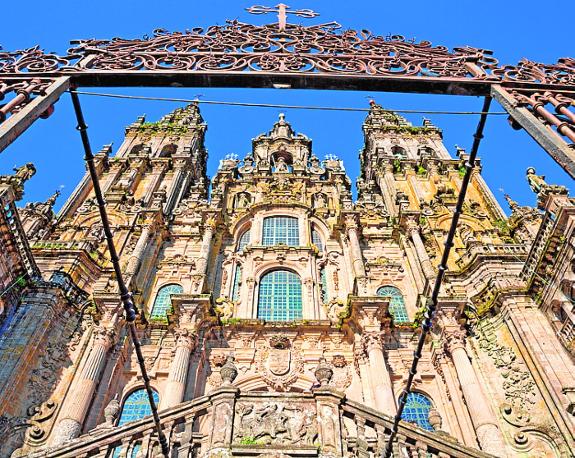

Sections
Highlight

Debbie Bartlett
Friday, 4 December 2020, 11:09
Compartir
It has been a destination for pilgrims for hundreds of years, making their way on foot along the world-famous Caminos de Santiago, and on 4 December 1985 the historic centre of this lovely town in Galicia was officially declared a Unesco World Heritage Site.
The Praza de Obradoiro, the main square, is home to the cathedral, the Hostal Dos Reis Católicos (built in the 15th century as a hospital and now a luxury Parador hotel) and the council and regional government building, and it is suprisingly austere in design. The picturesque narrow streets in the historic centre are lined with beautiful Romanesque, Gothic and Baroque buildings, some of which form part of the campus of the university which was created in the early 16th century.
Santiago is the Galician version of the Latin 'Sanctus Iacobus', meaning St James, and legend has it that the remains of the apostle James were brought to Galicia for burial and in 813, a shepherd followed a bright star to the burial site in Santiago de Compostela. The cathedral was built on the site where his remains were said to lie.
The 1,000-year-old pilgrimage to the shrine of St James in the Cathedral of Santiago de Compostela is known in English as the Way of St James. Over 200,000 pilgrims travel to the city each year from points all over Europe and other parts of the world, culminating in a visit to the cathedral to kiss the mantle of a 13th-century image of the saint from a passageway behind the altar, and pray before the relics of Saint James and two of his disciples, Saint Theodorus and Saint Athanasius, in the crypt.
2020 has probably been the quietest year ever in Santiago, as the pandemic meant that hundreds of thousands of planned visits had to be cancelled. Next year, however, is an Año Xacobeo, a Jacobean or Holy Year, and the streets, squares and cathdral will undoubtedly be full of life again, as those with faith fulfil their dreams of a pilgrimage and obtaining their 'Compostela', and others come to soak up the atmosphere of this very special World Heritage treasure.
Publicidad
Publicidad
Publicidad
Publicidad
Reporta un error en esta noticia
Necesitas ser suscriptor para poder votar.